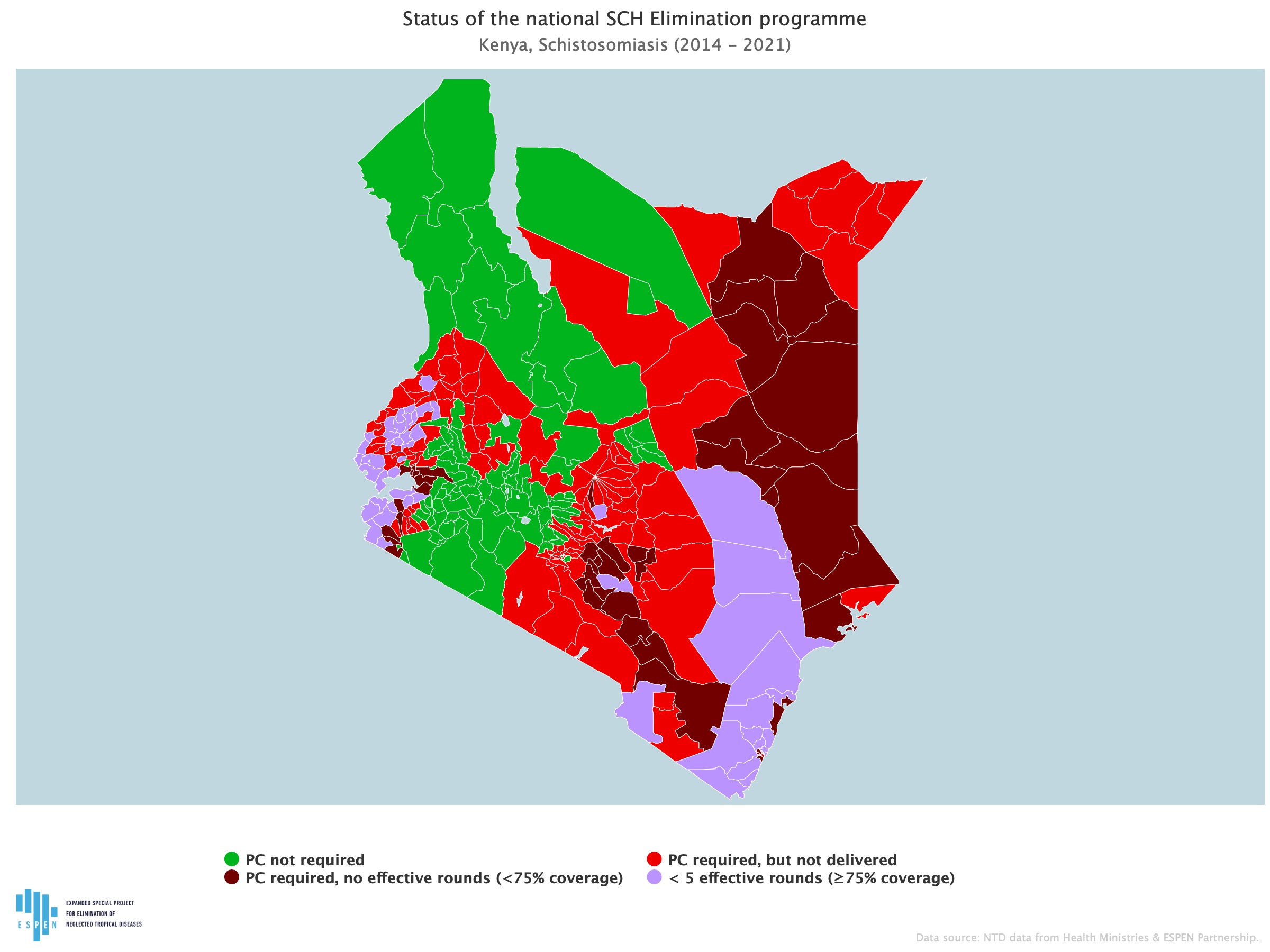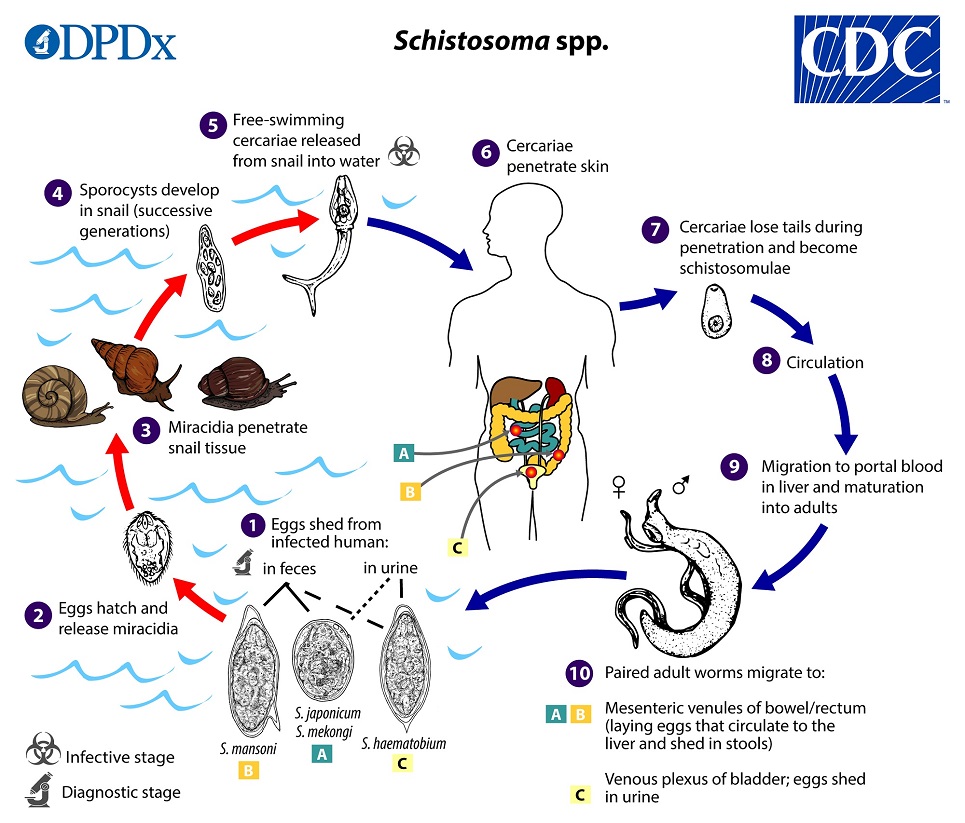Summary
Schistosomiasis (bilharzia) is one of the neglected tropical diseases that has been targeted for elimination as a public health problem by 2030.
The diseases is caused by parasitic worms called schistosomes which penetrate the human skin when one is in contact with water contaminated with the infective larvae stage of the worm. The larvae develop in the human host, copulate and produce eggs which are released through faeces or urine. The eggs hatch and are taken up by freshwater snails where they develop to infective larvae and the cycle continues.
The three main species infecting humans are:
Schistosoma haematobium: found mainly in sub-Saharan Africa and some areas in South America, Carribean and Arabian peninsula
Schistosoma japonicum: found in Asia
Schistosoma mansoni: found mainly in Africa and some areas in the Middle East
Other species are S. mekongi, S. intercalatum and S. guineensis.
Elimination of this disease is mainly through mass drug administration where treatment is given to the eligible population at risk of the disease (population 5 years and above), on an annual treatment regimen.
Kenya is one of the countries endemic to schistosomiasis. In 2021, 13 million people (5 years and above) were eligible for treatment with praziquantel.

Status of the national SCH elimination programme between 2014 and 2021. PC = Preventive Chemotherapy
Kenya has developed the National breaking transmission strategy which aims to safely stop mass drug administration following sufficient reduction in prevalence and intensity of soil transmitted helminthiasis, schistosomiasis, lymphatic filariasis and trachoma by 2023. This contributes towards achieving the 2030 goal of elimination as a public health problem.
The 2023 individual goals for schistosomiasis include:
100% geographical coverage of treatment
At least 75% therapeutic coverage of eligible population
Achieve prevalence of <2% in endemic areas
This dashboard provides a national and sub-national summary of:
Disease prevalence
Population coverage of treatment with praziquantel
To understand the life cycle of the schistosomes, kindly view the figure below.
